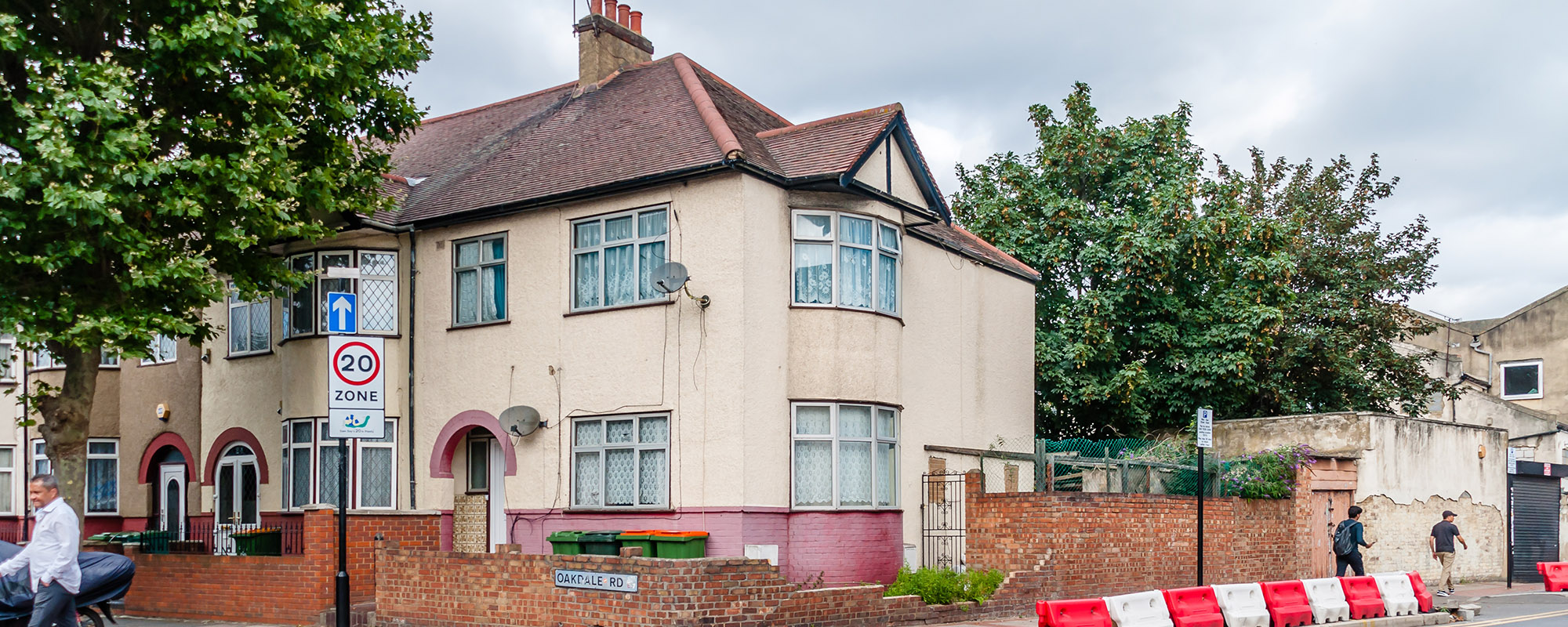FREE Bridging Loan Advice
“We know that time is precious for you, we can work around your availability while searching for the most competitive mortgage products and overseeing your mortgage application from start to finish”.
Jonathan Smith – (CeMAP, BA Hons, Aff SWW, CeRER)
When you need short-term funding for your project, a bridging loan provides you with a fast solution. You may be looking to buy a property but haven’t sold your existing one yet. You may need to complete on an auction purchase while your long-term finance is being finalised. Or you may have found a property that’s in need of renovation but are struggling to find a lender willing to accept it as security. Whatever you require funding for, a bridging loan enables you to proceed quickly with your project.
At Trinity Finance, we understand that time is money when you’re dealing with property. Our mortgage and protection brokers are ready to process your application quickly, ensuring it’s tailored to meet your financial needs. They will make certain that the bridging loan offers the right flexibility and strive to find the most competitive rate for you. In this guide, we’ll explain what a bridging loan is, what you can use it for, the different types to choose from and the costs involved when taking advantage of bridging finance.
What is a bridging loan?
As the name implies, this type of loan is used to bridge the gap between your finances. It allows you to move ahead with your project while your next source of financing is being organised. Bridging loans are arranged very quickly, making them ideal for time-sensitive projects. They provide fast access to funds when there’s no time to wait for a mortgage to be arranged or a property to be sold.
As short-term finance, bridging loans are typically taken out for up to 12 months. Some terms can last longer, such as up to 24 months. Loan amounts tend to start at £25,000 and can run into the millions. You don’t have to pass an affordability assessment as you would when applying for a mortgage. This means your income isn’t taken into account or your credit history. Instead, the loan is secured against one or more properties, which can be residential or commercial, or another type of asset. Whereas lenders won’t consider some properties as suitable for security when dealing with mortgages – for example, if they’re in poor condition – all properties are considered as security for bridging loans.
You must also provide the lender with an exit strategy. This confirms how you intend to repay the loan at the end of the term. For example, you can sell the property that the loan is for and repay the loan from the sale proceeds. Or you may prefer to refinance using a mortgage.


What can a bridging loan be used for?
This flexible form of funding can be used for residential or commercial purposes. You can benefit from a bridging loan as a home buyer, a landlord, an investor, a developer or a business owner. You can apply for a bridging loan as an individual, a partnership, a limited company or an offshore company. Bridging finance is also available to you whether you’re a UK resident, a foreign national or a non-UK resident. Typically, bridging loans are used to buy a property before selling an existing one. However, there are many uses for this type of funding, which we’ve detailed below.
Bridging loan uses
With a bridging loan, you can:
- Buy a property without selling your existing one. You may have found a property that you don’t want to miss out on but haven’t sold your existing one yet. Having a bridging loan lets you go ahead with your purchase.
- Proceed with your purchase despite a break in the property chain. You may be stuck in a property chain that’s either taking too long or unexpectedly breaks. If the buyer for your existing property suddenly withdraws, a bridging loan ensures you can still buy the new property you’ve chosen.
- Renovate or restore a property. Lenders won’t provide mortgages for properties that are considered to be uninhabitable. With a bridging loan, you have the funds to buy and renovate a property or to use for property restoration. When the property is habitable, you can either refinance to a mortgage or sell it for profit.
- Buy a property at auction. Auctions have a short completion time so bridging finance allows you to buy a property quickly while your mortgage is still being processed.
- When looking to downsize, a bridging loan is secured against your existing property. Its higher value allows you to borrow enough not only to buy your new home but also to afford other expenses. For example, you may want to update your new property before moving into it.
- Fund a self-build project. You can use the funds to buy a plot of land and begin building your new home while waiting for your self-build mortgage to be finalised.
- Prevent a repossession. As long as there’s enough equity in your property to cover the amount borrowed with a bridging loan, the funds can be used to pay off your mortgage arrears. You can then sell your property, unless you have alternative means to repay the bridging loan, at the full market value. This leaves you with some profit to clear any other debts rather than your property being repossessed and sold quickly for a lower price.
- Refinance a loan that’s already in effect. Your existing loan may have reached the end of its term and needs to be repaid. A bridging loan can cover this and allow you to continue with your project.
- Use it for your business. A business bridging loan can be used to overcome cash flow issues in your business as well as for other uses. For example, it can help you to meet a particular order, pay a tax bill or buy equipment or stock.
- Prevent bankruptcy. Provided that your property has sufficient equity, you can use a bridging loan to pay off creditors. Doing so ensures that you avoid bankruptcy.
- Deal with probate issues. A bridging loan can be used to pay large bills that become due, such as an inheritance tax bill, while the probate process is ongoing. It can be secured against an asset belonging to the estate.
Types of bridging loans
First charge bridging loans
As mentioned earlier, your property is used as security for the loan. Therefore, a charge is made against it. If this loan is the only one to be secured against your property, then it’s a first charge bridging loan. The lender can recoup their money first should you fail to repay the loan.
Second charge bridging loans
If you already have a mortgage or other type of loan that’s secured against your property, the bridging finance is counted as a second charge. This means the lender will be able to recoup their money after the first charge lender has been repaid.
Open bridging loans
An open bridging loan is when you don’t have a definite date set to repay it. For example, you might decide to sell your property as your exit strategy but don’t have a buyer lined up or have any idea how long it will take to sell.
Closed bridging loans
With a closed bridging loan, you know exactly when you’ll have the funds to repay it. For example, you may have an investment policy that’s about to mature or a bonus that’s to be paid to you on a certain date.
Regulated bridging loans
If the bridging loan is secured against a residential property that’s intended for you or your immediate family to live in either now or in the future, then it is regulated. If you have previously lived in the property, some lenders will stipulate that your loan needs to be a regulated one. These loans are regulated by the Financial Conduct Authority (FCA) and generally have terms of up to 12 or 18 months. Not all lenders are authorised by the FCA so fewer provide them in contrast with unregulated bridging loans.
Unregulated bridging loans
If the property to be used as security isn’t for you or an immediate family member to reside in, your bridging loan is unregulated. You will need an unregulated bridging loan, therefore, if you use the property as an investment or for business use. This can include a commercial property or a buy-to-let property, for example. If you apply for a bridging loan as a business or company rather than an individual, it will be unregulated. Unregulated bridging loans tend to be more flexible than regulated ones and can have longer terms of up to 36 months.
Get expert financial advice from your mortgage broker
At Trinity Finance, our mortgage and protection brokers are available to discuss your short-term bridging loan needs. Located throughout Kent, London and Edinburgh, they can ascertain the right type of bridging loan that you need to apply for. This depends on what the money is to be used for, the type of security available and your exit strategy. To set the process in motion, simply give us a call on 01322 907 000. Our expert brokers will work swiftly on your application to ensure that you benefit from quick access to the funds you need. If you prefer, send your details to us by email at info@trinityfinance.co.uk or via our contact form. We’ll reply to you with more information about the fast bridging loans available, enabling you to proceed with your project without delay.
How much does a bridging loan cost?
The cost of a bridging loan depends on various factors. These include the amount you want to borrow, the loan term, the loan-to-value (LTV) ratio, the type of property used as security, the property’s condition and location as well as your intention for the loan, among others. As bridging loans are arranged quickly and based on a short term, they tend to be more expensive than other types of loans.
Bridging loan interest rates
Interest on bridging loans can be charged in three ways, as detailed below.
- Monthly: With this option, you pay the interest each month rather than adding it to the loan amount.
- Retained: Retained interest means that it’s borrowed at the outset for a certain period. It’s deducted from the gross loan to cover the interest that accrues over the term.
- Rolled up: The interest is added to the loan amount for this option. When you repay the loan, you also pay all of the interest that’s due.
You may be able to choose a combination of these, depending on the lender. For example, you may prefer to have retained interest initially but then change to paying interest on a monthly basis.
Additional bridging loan costs
As well as your loan amount and interest, there are other costs to consider. These include:
- An arrangement or facility fee. This is charged by the lender and covers the setting up costs of your loan. The fee is usually 2% of the loan amount and is added to it.
- An administration fee. Also charged by the lender, this fee covers their paperwork costs.
- A valuation fee. A valuation has to be carried out on your property by a surveyor before the lender will approve your loan.
- Legal fees. You’ll need to pay your own solicitor’s costs as well as the lender’s legal fees.
- An exit fee. Some lenders charge an exit fee when you redeem the loan. This is usually between 1% and 2% of the loan amount.
The advantages and disadvantages of bridging loans
As with any type of loan, you need to weigh up the pros and cons before making a decision.
Advantages
- You have fast access to funds. Bridging loan applications are quick to complete and the funds are transferred swiftly to your account. Therefore, if you’re in a hurry to secure some extra cash, a bridging loan makes sense.
- You can borrow a large amount. The majority of lenders can provide loans of up to £5 million but a number of specialist lenders offer large bridging loans. These can extend up to £1 billion.
- The lending terms are flexible. Bridging loan lenders are more flexible with their criteria than other lenders. Rather than focusing on your income and credit rating, they will be more concerned about what you are providing as security as well as your exit strategy. Lenders also offer a choice of repayment options for bridging loans.
- Multiple properties can be used as security. You can use more than one property as security for your bridging loan. As long as each property has equity, this enables you to borrow the funds you need.
- Any type of property is considered as security. Bridging loan lenders are willing to accept any property type as security. This includes residential, commercial, semi-commercial, freehold and leasehold properties as well as plots of land. Properties with a non-standard construction or those that are in very poor condition are also considered.
- You can use the loan to provide funds for your business. Bridging loans aren’t restricted to property use. Take advantage of this flexible funding to help with your business cash flow, purchase new equipment or pay the company tax bills, for example.
Disadvantages
- You pay a higher interest rate. To benefit from the uncomplicated application process, flexible terms and fast funding, a higher rate of interest is payable for a bridging loan.
- There are additional costs to factor in. Various fees are payable on top of the interest that’s charged, as detailed earlier. This can make your bridging loan costly.
- You need something to offer as security. As a secured loan, you need to have a property or other asset to offer the lender. Without this, you won’t be approved for a bridging loan.
- Your property may be at risk. If you fail to repay your loan, you risk losing the property or other asset that you’ve used as security.
Alternatives to bridging loans
If you’re still undecided as to whether a bridging loan is right for you, there are alternative options to consider.
- If you have equity in your property, consider remortgaging to release some funds.
- Second charge mortgage. If you have an existing mortgage and don’t want to remortgage, a second charge mortgage may be a good solution for you. This allows you to borrow funds using the equity as collateral.
- Let-to-buy mortgage. If you want to buy a new home without selling your existing one, this arrangement is useful. With a let-to-buy mortgage, you can remortgage your current home to a buy-to-let mortgage, releasing some of the equity if possible to use as the deposit. If there’s enough equity left after that, you can put it towards the deposit for your new home too. You then also need to take out a residential mortgage for your new home.
- Personal loan. As an unsecured loan, you may prefer to take out a personal loan instead of a bridging loan. This means you won’t be putting your property at risk. The amount you can borrow with a personal loan is limited compared with a bridging loan. The maximum you can expect to borrow is usually £25,000.
We can arrange short-term funding for your project with a bridging loan
Get in touch with us on 01322 907 000 to discuss your bridging finance requirements. Our expert mortgage and protection brokers can help you choose the right loan type and will work efficiently to process your application. This means you can rely on having fast access to the funds you need, even with a very tight deadline.
At Trinity Finance, we work closely with private banks and specialist lenders offering bridging finance. We ensure that you benefit from flexible terms that meet your needs and search for the most competitive bridging loan rates. For more information, send an email to us at info@trinityfinance.co.uk or an enquiry via our contact form. Boost your cash flow quickly when you choose from the wide range of bridging loans in London, Kent and Edinburgh.
FAQs
Lenders accept properties, land and building plots as security when arranging bridging loans.
Yes, lenders are willing to provide bad credit bridging loans. This is because they focus more on the security you have provided as well as your exit strategy rather than your income and credit history.
You don’t need to be a homeowner but you do need to have some form of security to offer the lender. As a bridging loan is secured, you must have a property or other asset, such as land, to offer before being approved for the loan.
Being approved for a mortgage if you’ve previously had a property repossessed can be difficult but it is possible. You’ll need to build your credit score back up to show lenders that you pay your bills on time. Our mortgage brokers will approach specific lenders who consider applications after a repossession. You will likely be charged a higher rate by the lender due to your adverse credit history.
Absolutely. As long as you make your mortgage repayments in full and on time each month, this will gradually increase your credit score.



